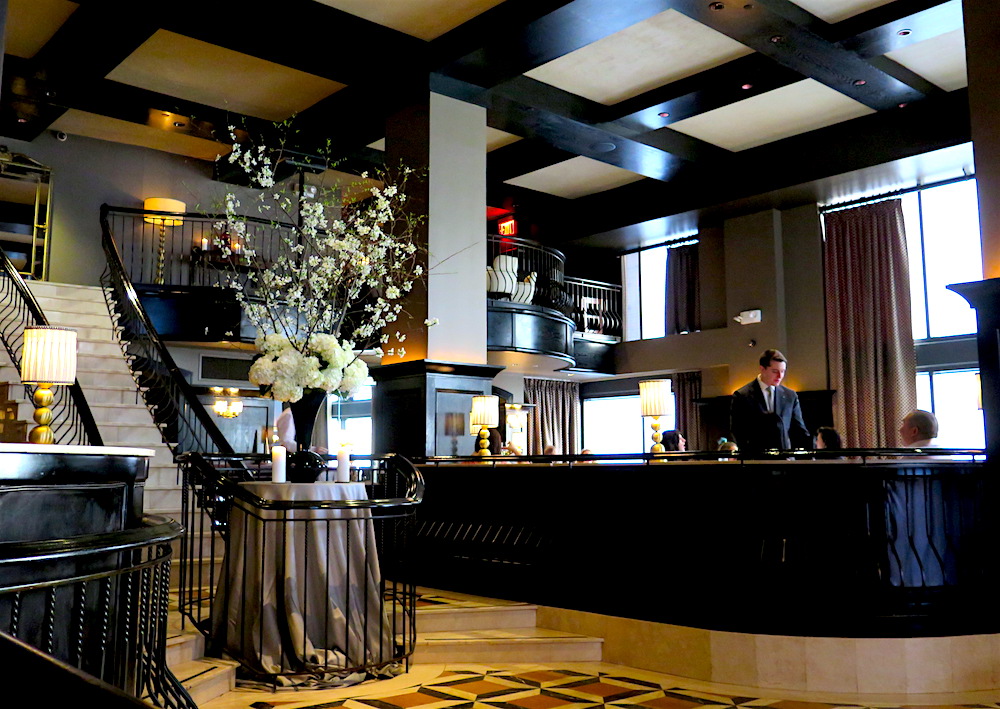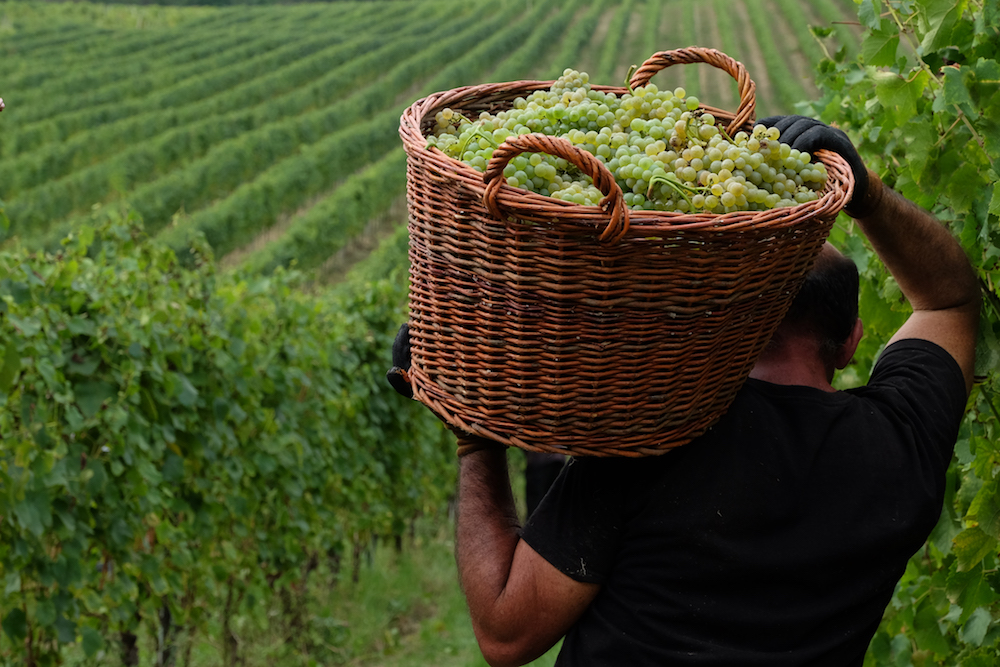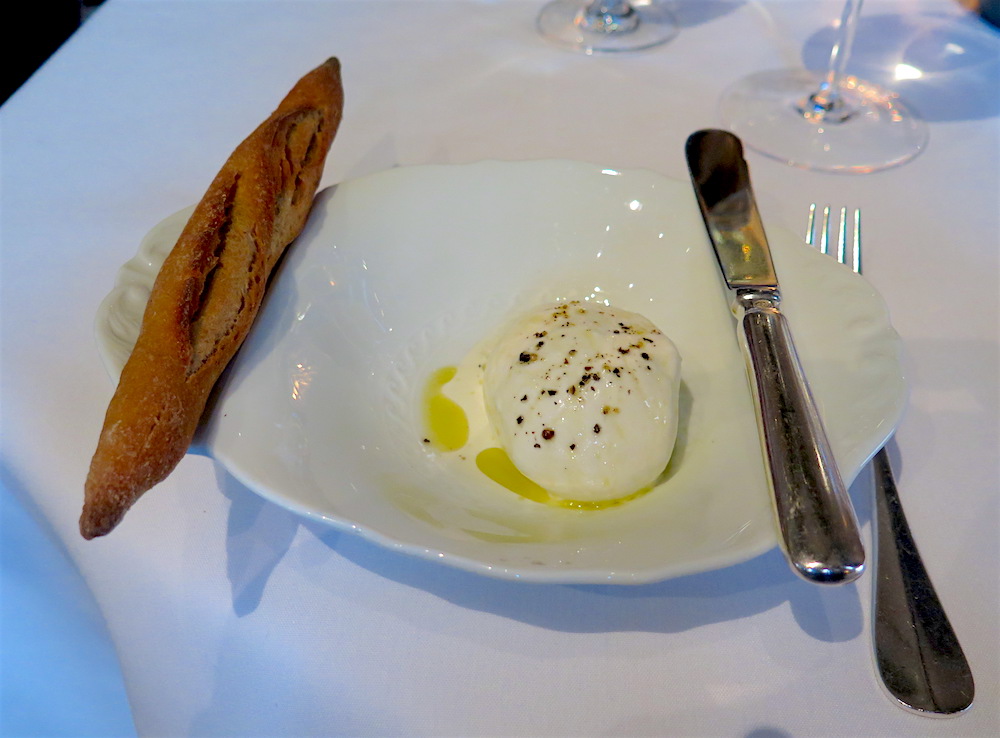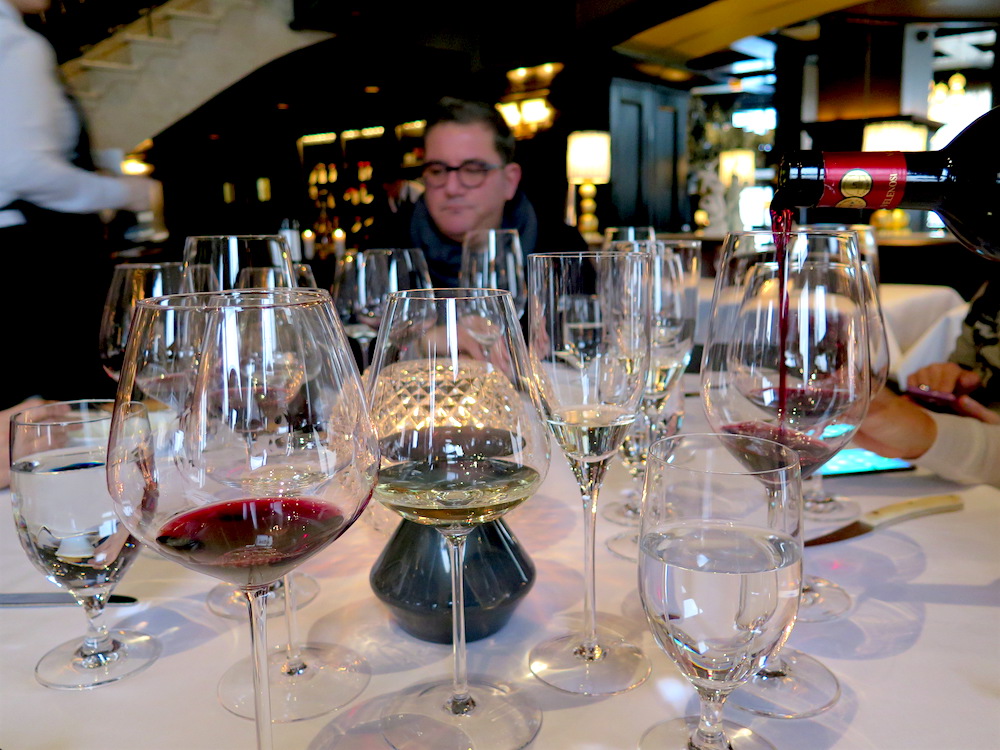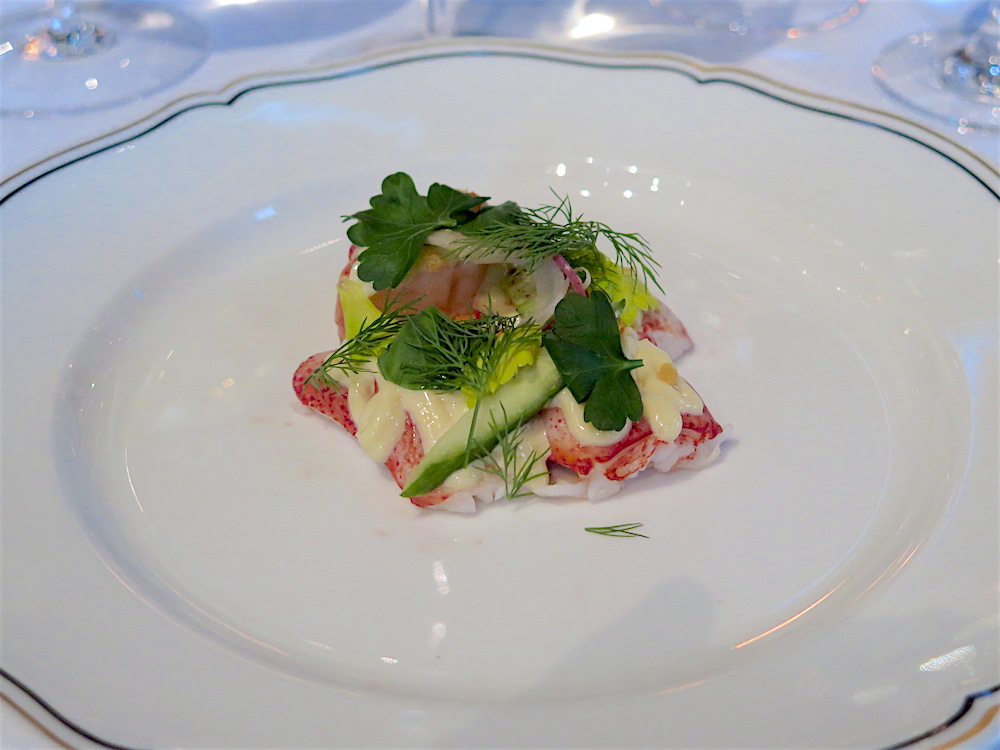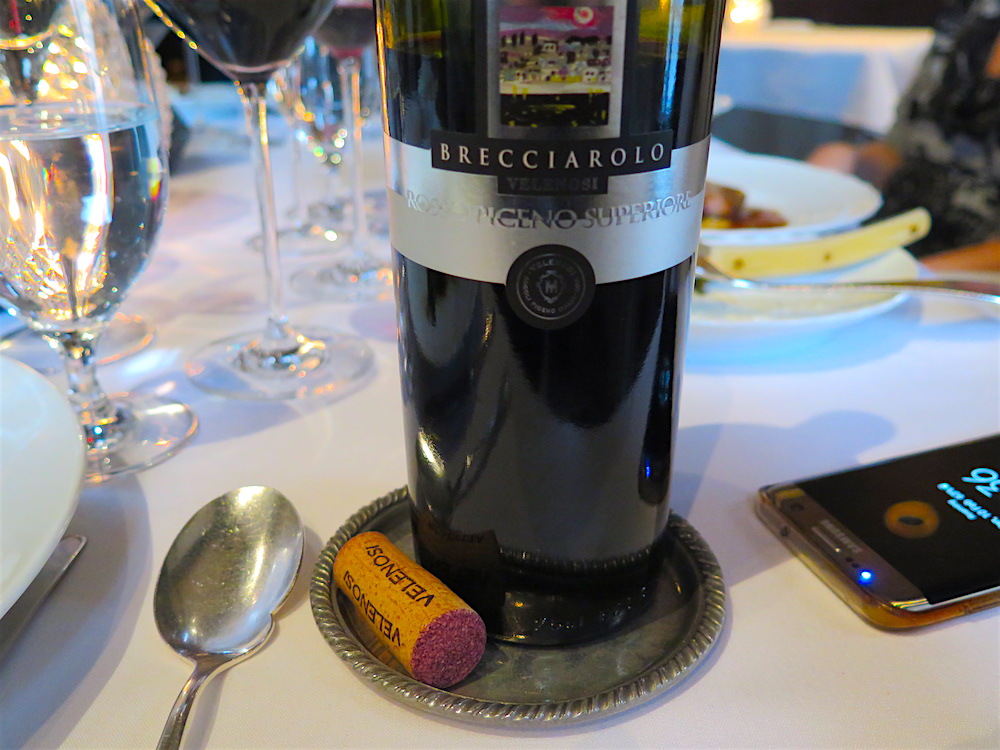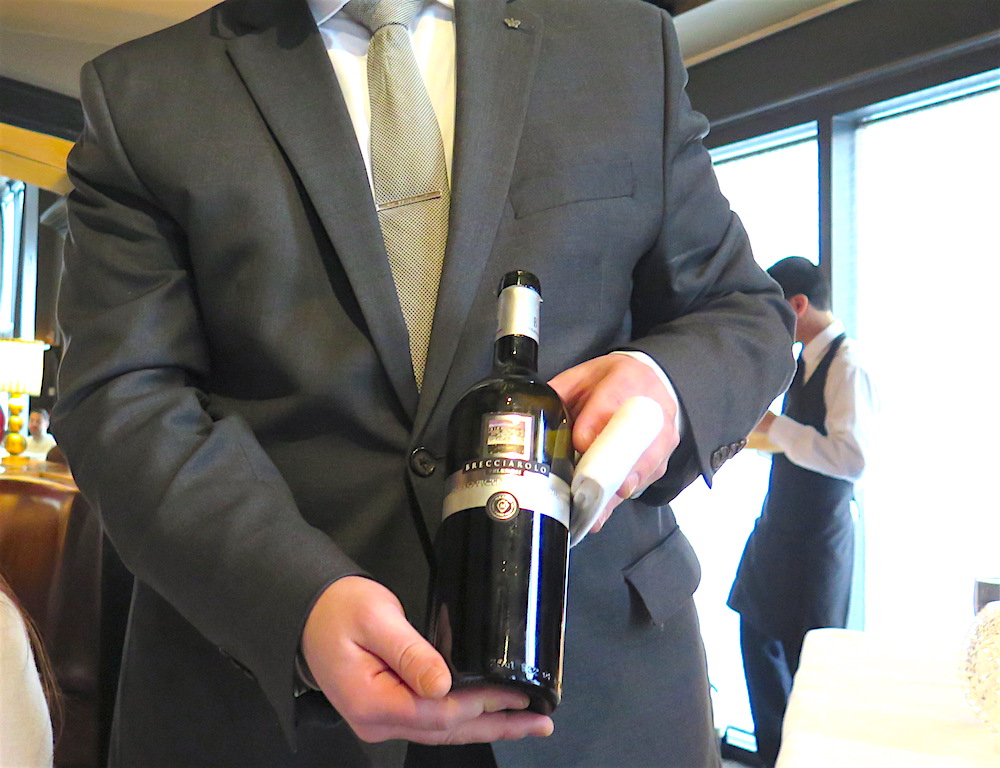Amidst a midwinter storm in Manhattan, the city mounded in snow meringue, few sanctums are more welcoming than the palazzo-like Del Posto, the extraordinary Michelin-starred Italian restaurant in Chelsea — and particularly when tasting the wines of Velenosi of Le Marche, Italy.
On that particular snowy afternoon, the sounds of the city muffled by the snow and Del Posto’s signature cosseting of its clientele (complete with pianist at grand piano), all cares and concerns gave way to a renewed appreciation for the pleasures of Italian cuisine perfectly paired with Italian wines.
Angela Velenosi, founder of Velenosi Vini, established her winery in 1984 with limited capital and, in her words, “no know-how” — and yet, armed with little more than her signature passion for life and an acute intuitive business savvy, Velenosi now owns the second largest family-owned winery in the Le Marche region along the Adriatic Coast.
Located in Ascoli Piceno, the southernmost province of the region, Velenosi produces more than 2.5 million bottles annually on vineyards that encompass 365 acres. Apart from the region’s numerous rolling hills and its proximity to the sea, the winery has the additional advantage of being situated amidst the Rosso Piceno Superiore subzone, the province’s premier area.
The town of Ascoli Piceno, notable for its travertine marble, dates to 1000 B.C. — with viticulture traditions that have been perpetuated by producers like Velenosi. One of Velenosi’s strengths has been its cultivation of the region’s indigenous grapes such as passerina, pecorino, and lacrima.
Offered as an apéritif, Velenosi Passerina Brut, a vibrant 100% Passerina sparkling wine with pinhole bubbles, activates the appetite with a delicate floral and fruit nose of acacia and peach with a bit of citrus brioche on the palate — all of which make this wine an elegant complement to Del Posto’s “assaggi,” the amuse-gueule that precedes each meal.
While pecorino is widely recognized as a toothsome cheese, fewer people recognize that pecorino is a grape grown in the mountains around Le Marche. For the bread course at Del Posto — an indulgent ritual unto itself that pairs a baby baguette the size of a breadstick with a globe of crème fraîche whipped with cream and drizzled with olive oil — a bottle of Villa Angela Pecorino DOCG, 100% Pecorino in hues of straw and celadon, provided a perfect balance of herbal acidity marked by hints of sage and thyme and a pleasing minerality.
Equally elegant was a bottle of Verdicchio dei Castelli di Jesi Doc Classico (2015), brilliantly yellow with shards of chartreuse that offered a green apple and honey bouquet. Well-balanced and slightly tangy, this 100% Verdicchio served as a pleasing counterpoint to Del Posto’s lobster salad flecked with herbs and dabbed with lemon aioli.
(And speaking of herbs, the hand towels at Del Posto served intermezzo are infused with rosemary: inhale for clarity.)
The segue into Velenosi reds commenced with a bottle of Brecciarolo, an oak-aged wine made from 70% Montepulciano and 30% Sangiovese. On the nose, this garnet red wine offered the powdery sweetness of violets underscored by vanilla and spices. This complex bouquet materialized in the mouth with a remarkable similarity, making this full-bodied wine a warm and flavorful complement for both primi and secondi courses.
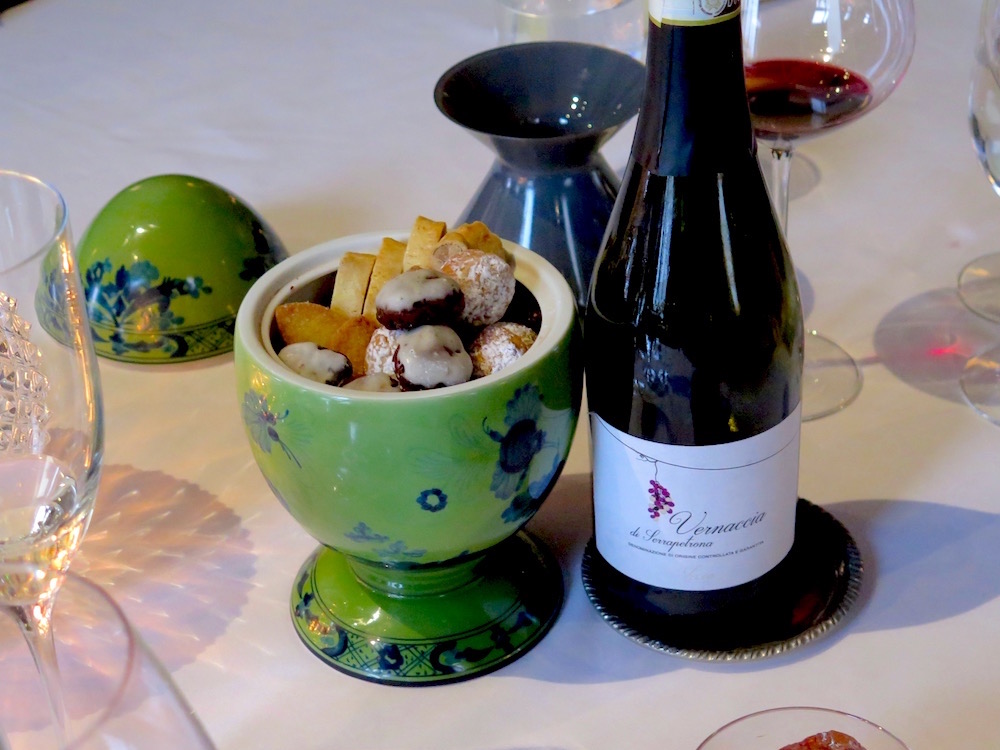
Velenosi’s Vernaccia di Serrapetrona DOCG, a naturally sparkling red wine produced from 100% Vernaccia Nera ©MRNY
One of the many revelations of the afternoon occurred with the formaggio, a 24-month aged Parmigiano-Reggiano served with gnocco fritto alongside a 25-year-old balsamic vinegar that was perfectly paired with Vernaccia di Serrapetrona DOCG, a naturally sparkling red wine produced from 100% Vernaccia Nera. With antecedents that link back to Dante’s Divine Comedy, this semi-sweet sparkler is the result of fermentation of 50% dried Vernaccia Nera and 50% fresh crushed grapes. Bright ruby red in color and lively on the palate, this crowd pleaser worked beautifully with the savory cheese and the aged Balsamico DOP.
Amidst the enjoyment of such expressive wines (all of which are available stateside at a very attractive price point), wines that reveal the uniquely fertile terroir of Le Marche, it’s easy to be forgiven for imagining that all is right with the world.
Such is the power of Italian wine and food.

